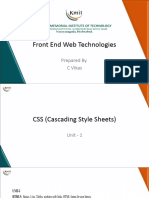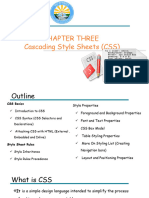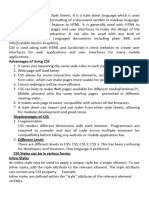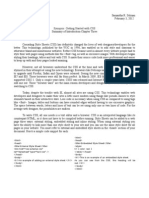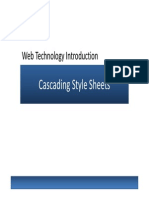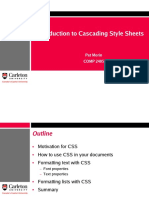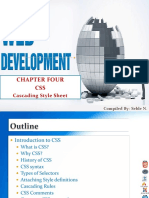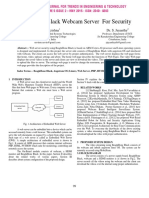0% found this document useful (0 votes)
81 views33 pagesCSS Training
The document provides an introduction to using CSS (Cascading Style Sheets) to style HTML documents. It explains some key benefits of CSS over HTML tags for controlling formatting and presentation, such as separation of content and design. It also demonstrates the basic syntax of CSS rules and different methods of attaching CSS to HTML pages, including internal and external stylesheets. Key CSS properties for controlling fonts, text, and color are defined and examples are shown.
Uploaded by
KalatheesCopyright
© © All Rights Reserved
We take content rights seriously. If you suspect this is your content, claim it here.
Available Formats
Download as PPTX, PDF, TXT or read online on Scribd
0% found this document useful (0 votes)
81 views33 pagesCSS Training
The document provides an introduction to using CSS (Cascading Style Sheets) to style HTML documents. It explains some key benefits of CSS over HTML tags for controlling formatting and presentation, such as separation of content and design. It also demonstrates the basic syntax of CSS rules and different methods of attaching CSS to HTML pages, including internal and external stylesheets. Key CSS properties for controlling fonts, text, and color are defined and examples are shown.
Uploaded by
KalatheesCopyright
© © All Rights Reserved
We take content rights seriously. If you suspect this is your content, claim it here.
Available Formats
Download as PPTX, PDF, TXT or read online on Scribd
/ 33









